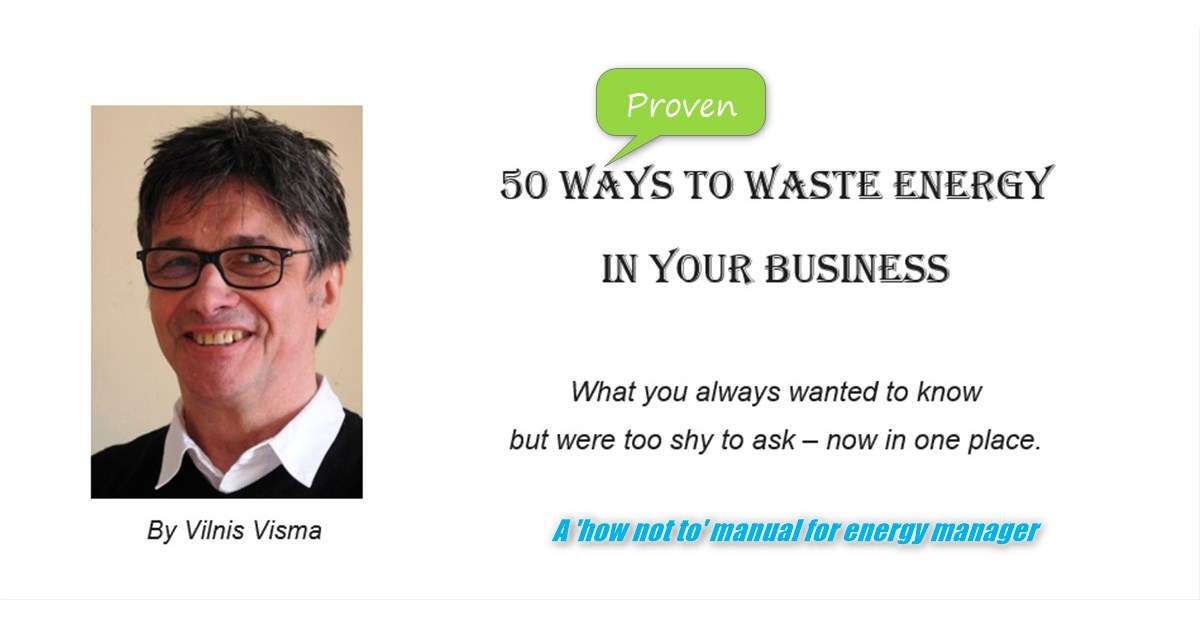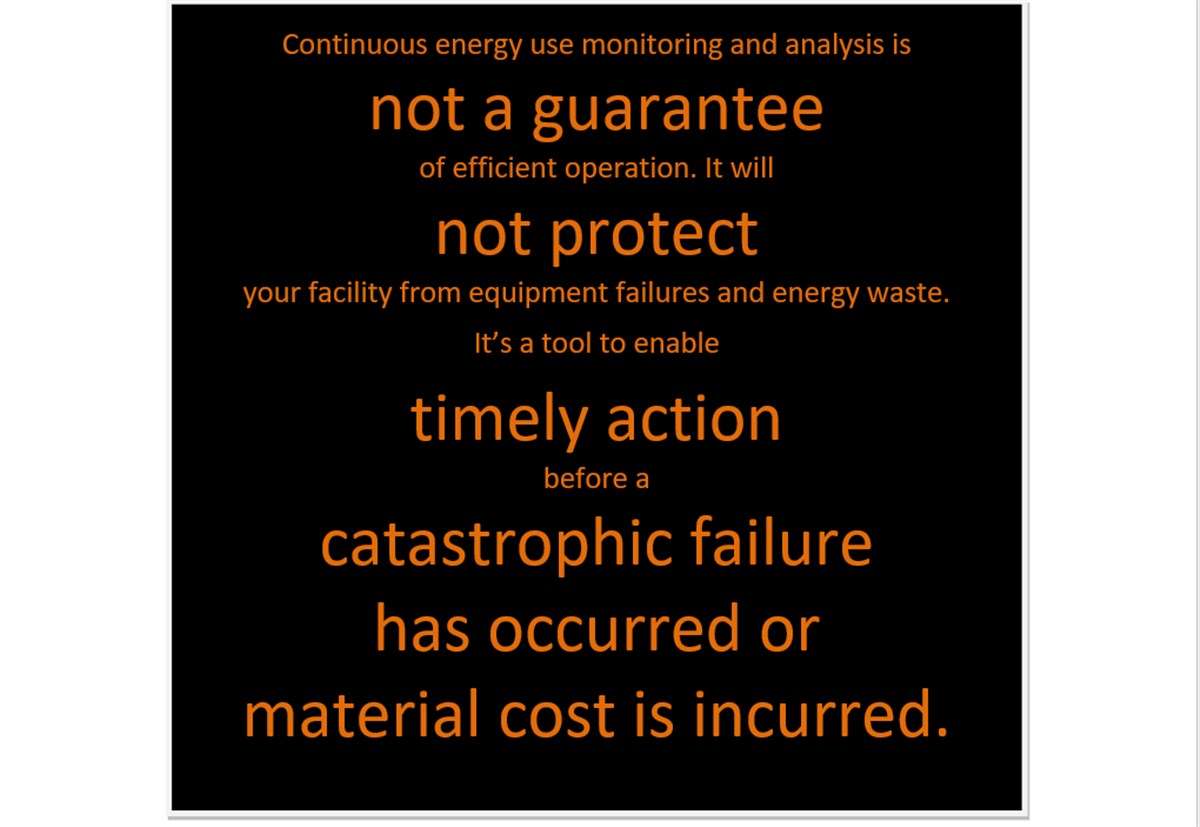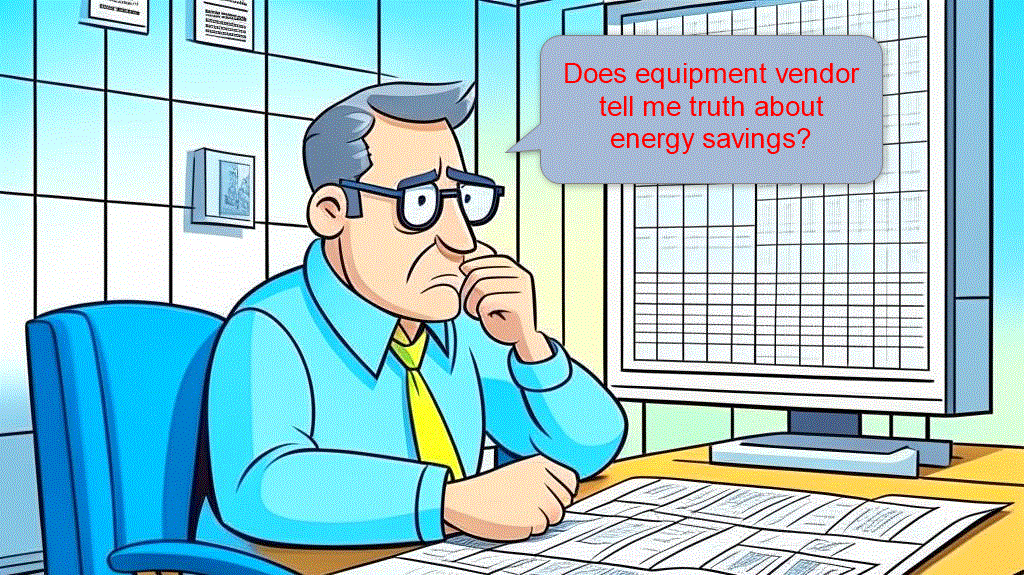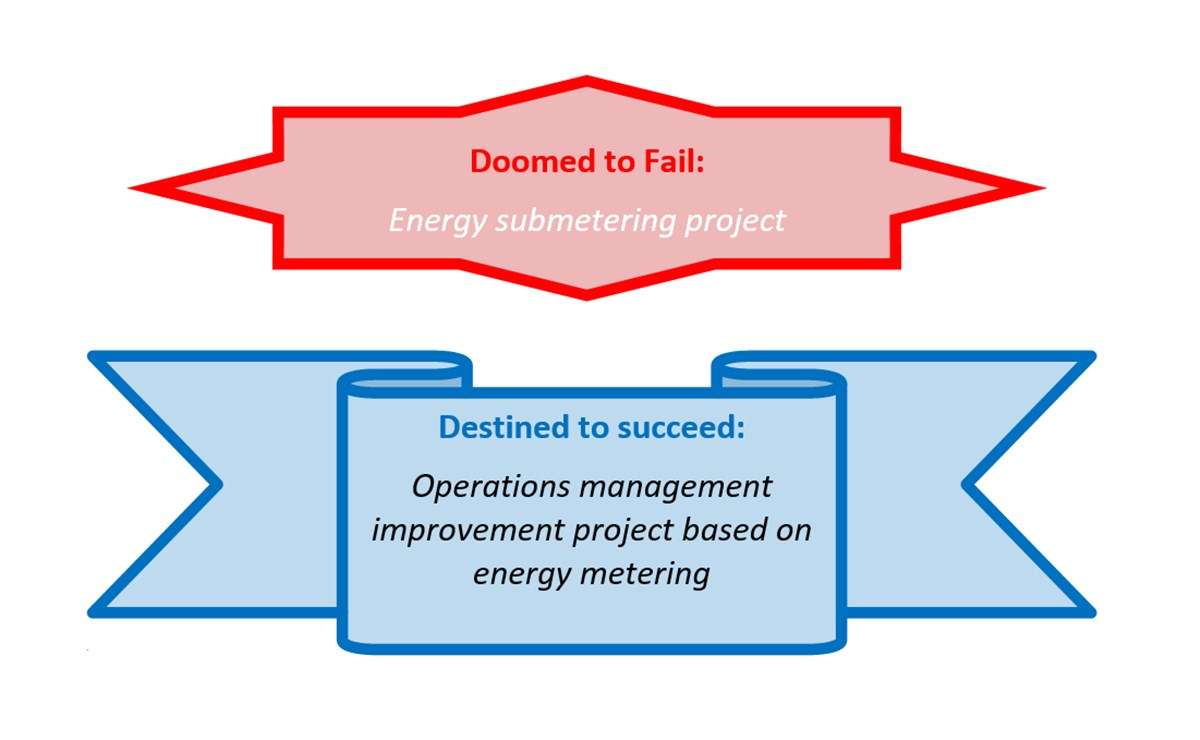Our UK colleague Vilnis Vesma produced a funny article on how to waste energy. I republish it with his permission. Please note invitation to training at the end.
This article is based on something Vilnis Vesma produced for a group of energy champions that he had been training. It was intended as a light-hearted “sideways look” at the subject, and it was never intended to be shared more widely, but he later learned that they had been using it as a behaviour-change aid. It turned out that just telling people not to do things didn’t work but when people caught themselves doing things that they’d previously ridiculed, they tended to change their behaviour.
Building envelope
- Ignore basic maintenance to ensure that windows and doors cannot be closed properly. This increases heat loss through draughts and makes staff less likely to cooperate with energy-saving campaigns.
- Invest in door wedges (or extra fire extinguishers) to make it as easy as possible for people to prop doors open.
- Arrange for cladding panels on industrial buildings to be damaged, for example by vehicle impact, so as to create holes in the envelope.
- When repainting doors and windows, remove any draught-proofing seals and do not replace them.
Space heating
- Over-ride the automatic time controls to ensure that the heating runs when the building is unoccupied.
- Set controls for maximum air temperature. The aim should be to make it so hot that occupants are forced to keep the doors and windows open, increasing the heat loss.
- Where air conditioning is provided, ensure that it is running continuously in heated rooms.
- Make portable electric heaters freely available.
- Set frost-protection temperatures as high as possible
Ventilation
- Maximise the supply of fresh outside air by running ventilation fans continuously at maximum.
- Where air recirculating ducts are provided, close the dampers to ensure zero recirculation and smash the actuator linkages with a hammer.
Boilers
- Remove all thermal insulation.
- Enable all the boilers on the range regardless of how small the heat load is.
- Maximise the boiler water temperature.
- On no account clean the boiler internally.
Burners
- Adjust the fuel/air ratio either very lean or very rich to reduce the efficiency of combustion. Rich is to be preferred as it will result in soot, which impedes heat transfer.
- Fit oversized burners.
Fans and pumps
- Fit oversized motors wherever possible.
- Avoid cleaning filters. Air filters can be removed if this will result in fouling of downstream heat-exchange surfaces.
- Run the equipment at maximum speed (a cheap way to make things even worse is to change pulley ratios to speed up the equipment).
- If variable-speed drives are fitted, set them to run permanently at the highest speed possible. Remember that a 50 Hz machine run at 60 Hz will consume over 70% more power.
- Where duty and standby pumps are fitted in parallel, open the isolation valves on the standby circuit in order to create a closed recirculation path via the standby leg.
- Unbalance distribution pipework or duct systems, so that artificially high flows are needed in most branches to satisfy the most constrained one.
- Run all fans and pumps continuously. If necessary, run them against closed valves or dampers.
Electric motors
- When a motor fails, have it rewound to a poor standard, as this will reduce its efficiency. If that is not possible, replace it with the cheapest and least efficient unit available, preferably oversized. Efficiency standards of new motors are being continuously improved, so you may need to shop on eBay.
- Shift motors slightly on their mounting plates so that any drives and couplings are misaligned.
- Ensure that drive-belts are slack. On multi-belt drives it can help to remove some belts. If possible, use the wrong kind of belt for the pulleys fitted.
- Neglect lubrication of bearings and gearboxes.
- If the driven equipment is being decommissioned, at least leave the motor energised and running.
Domestic hot water
- Use a central hot water supply system if local heaters would be more economical.
- Set the highest temperature possible.
- Remove any insulation from tanks and distribution pipework.
- Leave hot water running to drain.
- Always use hot water if cold water would do the job.
- Use electric immersion heaters in preference to gas or oil-fired boilers.
Lighting
- Obstruct windows and skylights to make sure that there is not enough natural daylight.
- Provide excessive light levels in working areas and try to ensure that corridors, stairwells, and store cupboards are even brighter.
- Use tungsten-filament lamps wherever possible. Because “general service” variants are now illegal for sale, you may need to buy “rough service” filament lamps which are even less efficient.
- Remove all labels from light switches in shared workspaces.
- Run lighting continuously. This is especially important in buildings with air conditioning because it increases the cooling load. It also sends a strong signal to your staff that you don’t care about energy, so nor should they.
- Where automatic lighting control is fitted, destroy the users’ instructions, and hide any remote controls.
- Fill the diffusers of fluorescent light fittings with dead flies.
Air conditioning
- Choose the lowest possible temperature set point and provide electric heaters on free issue.
- Run the air conditioning continuously including nights and on weekends.
- Control relative humidity to the narrowest range possible.
- Ensure that doors and/or windows are open frequently.
- Ensure that the heating and cooling can run simultaneously and set the cooling setpoint lower than the heating setpoint.
- In a space with two or more independent heating/cooling units, set half to cool and half to heat.
- Ensure that computers, photocopiers, coffee makers and kettles are always ON.
- Keep condenser and evaporator coils as dirty as possible.
Seriously now
For those who want to get things right and actually save energy, Vilnis will be running a weekly programme of continuing professional development sessions on the following technical topics:
- Chillers and refrigeration: 10 Feb
- Flow metering: 17 Feb
- Boilers and combustion: 24 Feb
- Steam systems: 3 Mar
- Motors and drives: 10 Mar
- Electricity submetering: 17 Mar
- Automatic controls in buildings: 24 Mar
- Compressed air: 31 Mar
Timings are 15:00 to 17:00 UK time. For full details please see https://vesma.com/z100







Leave A Comment